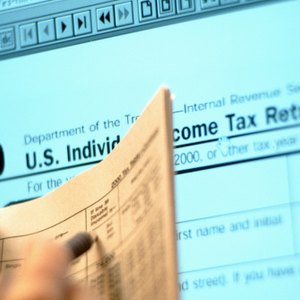
You’ll get your tax return processed more quickly and get any refund you have coming sooner if you file your tax returns electronically. In order to do this, you’ll need an Identity Protection Personal Identification Number. This IP PIN helps the IRS verify that you are personally connected to the Social Security number you’re using to file your taxes. Reviewing how to get your e-file PIN or retrieve a lost PIN will help you get what you need more quickly.
What Is an IP PIN?
To help make filing taxes online more secure, the IRS requires you to use a six-digit PIN to identify yourself. This makes it harder for someone who has your Social Security number to try and file your taxes and get your refund.
You cannot file tax returns electronically without a PIN. Once you get a PIN, you are in the IRS system for life. The PIN is valid for one year, with a new one generated each year for you. You only use your PIN when using IRS Forms 1040, 1040-PR and 1040-SS.
Read More: What Is the IRS Identity Protection Pin?
Get Your Information Ready
You’ll need to provide several pieces of personal information to get an IRS PIN. Have these ready so you don’t have to stop what you’re doing to look for this information. What you’ll need will include:
- Your email address
- Your street address
- Your Social Security Number or Individual Tax Identification Number (ITIN)
- Your tax filing status
- The number for one of your financial accounts, such as a mortgage, credit card, student loan or vehicle loan
- Cell phone number (if you don’t have a phone, your activation code will be sent by mail)
The IRS previously required a selfie or other way to create facial recognition for you, but after protests from taxpayers, they have dropped that requirement.
Getting a PIN Online
To get your IRS PIN, visit the IRS website. After you enter the information, use the Get an IP PIN tool. According to the IRS website, this service is generally available between mid-January and mid-November each year.
Follow the steps, which include logging in with your existing account or creating an ID.me account. If you have an existing IRS account, just log in and you’ll get your PIN. If you have to create an ID.me account, follow the steps, which the IRS describes as a rigorous verification process. If you’ve lost your PIN and need a new one, the IRS website can help with that, too.
Read More: Tax Credits: What Are They & How Do You Qualify?
Getting One by Mail
If you can’t or don’t want to do this online, you can apply for one by using Form 15227, Application for an Identity Protection Personal Identification Number. You will need a Social Security Number or Individual Taxpayer Identification Number and access to a telephone.
You can only do this if your adjusted gross income on your last return is less than $73,000 (for individuals) or $146,000 if you filed jointly with a spouse. Follow the directions and mail to the address on the form.
Read More: What if I Made a Mistake on my Taxes?
Visit an IRS Office
You can also visit an IRS office to do an IRS PIN request. You can find your local office by visiting the IRS website. Enter your zip code to find the office nearest to you. You’ll need to bring one current government-issued picture ID, and one other ID document to verify your identity.
Once the IRS verifies you, they will send you your IP PIN through the mail, which takes about three weeks to receive. You’ll then receive your new one each year after that.
Call to Get One
You can also call the IRS to get a PIN. Call 800-908-4490 to help get your PIN issued or reissued. Be prepared to be on hold for quite a while, especially since the COVID-19 pandemic caused worker shortages that caused big backlogs in IRS casework, return processing and phone service. Make sure you have all your documents and information ready to give to the customer service agent who takes your call.
References
Tips
- Keep a copy of your tax return for your records.
Warnings
- If you have any questions about your return, contact the IRS before you file to avoid the long delays associated with filing an incorrect return.
Writer Bio
Steve Milano has written more than 1,000 pieces of personal finance and frugal living articles for dozens of websites, including Motley Fool, Zacks, Bankrate, Quickbooks, SmartyCents, Knew Money, Don't Waste Your Money and Credit Card Ideas, as well as his own websites.

